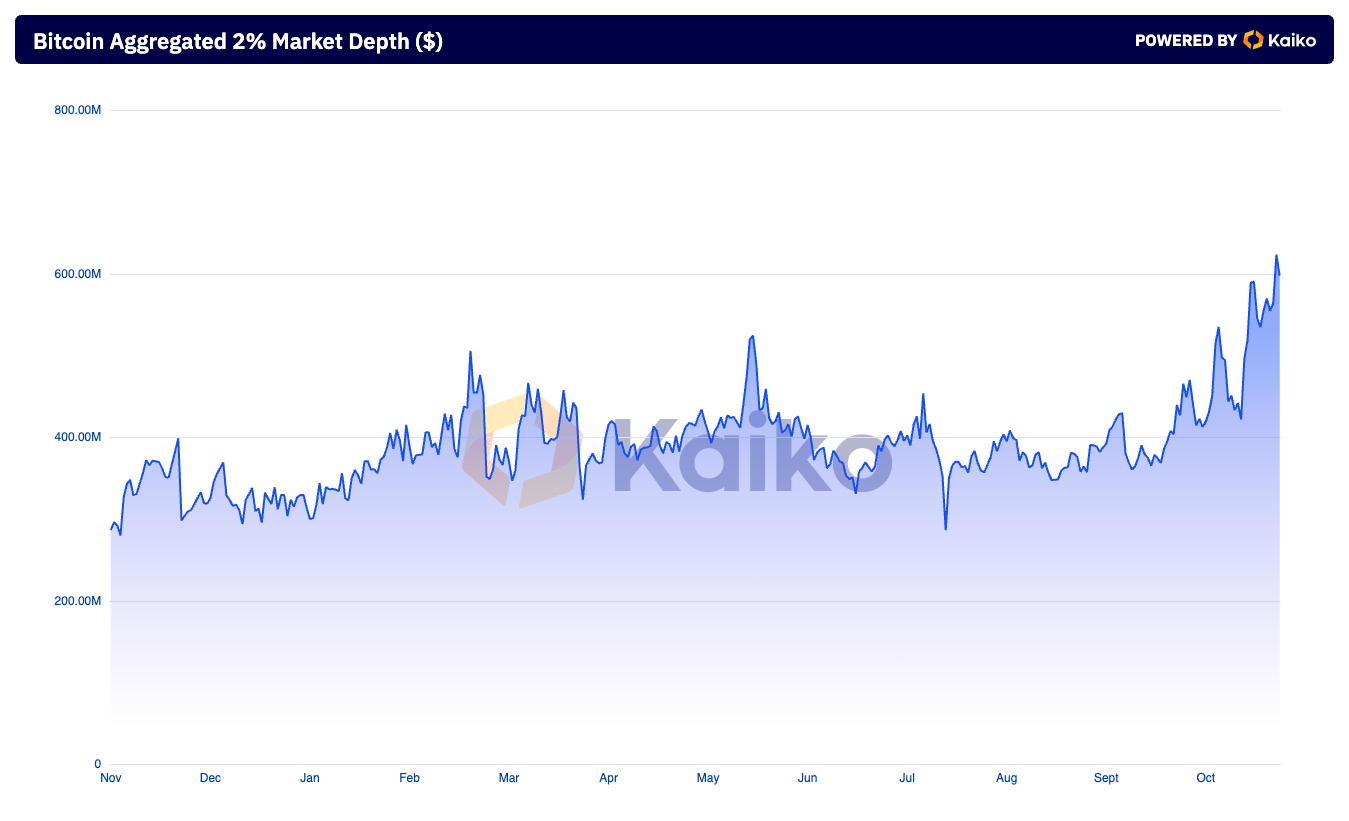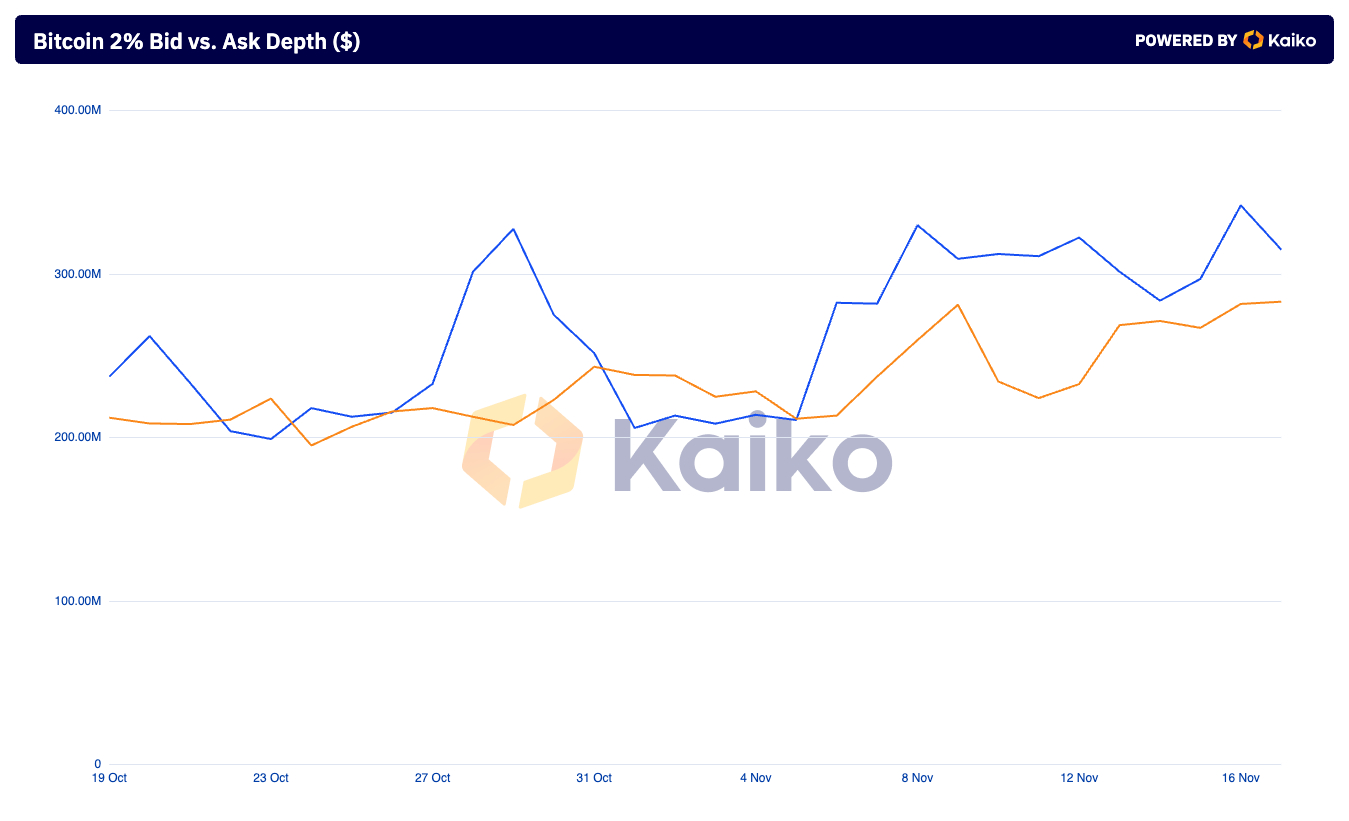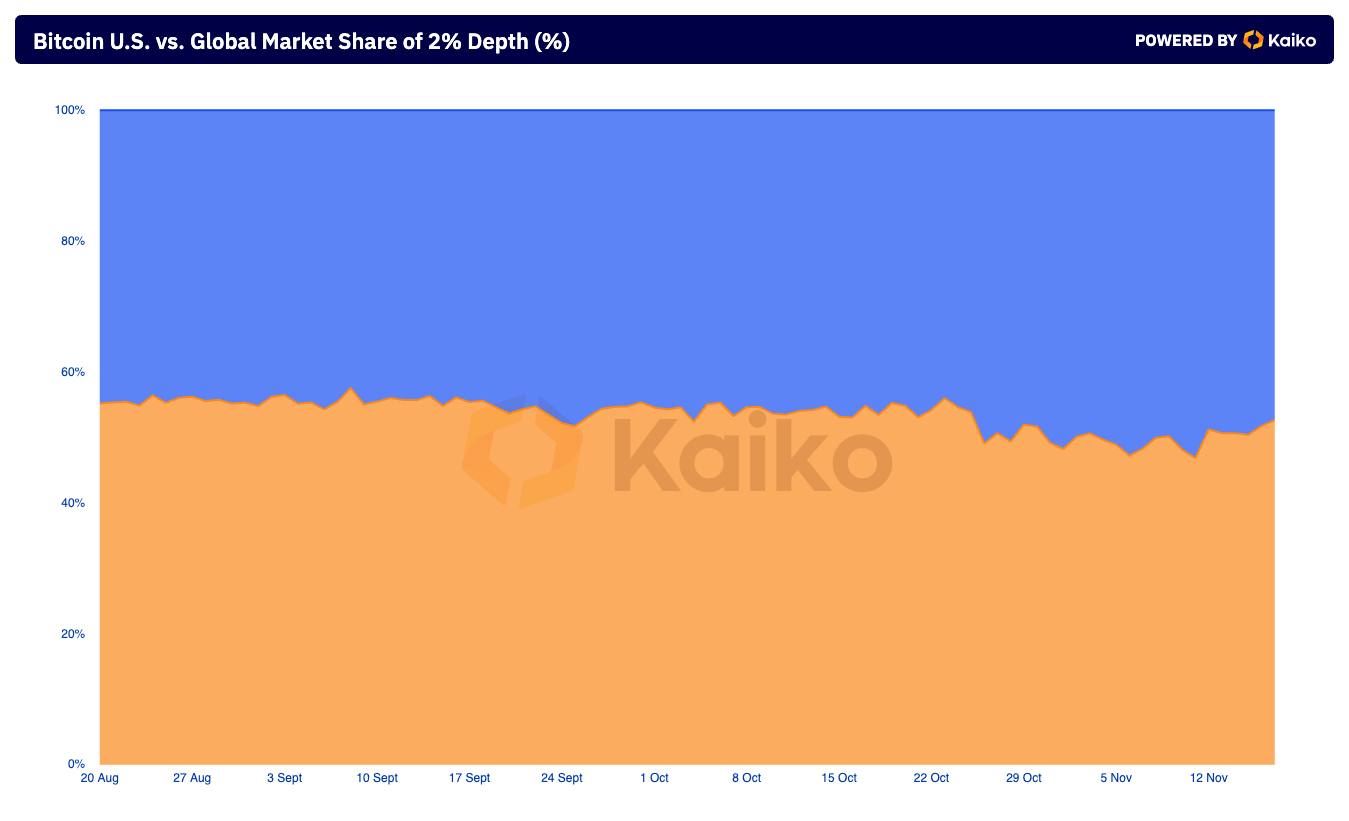Bitcoin’s total market depth of 2%, a measure of liquidity that combines buy and sell orders within a narrow price range of 2% around the market price, rose to a one-year high of $623.40 million on November 16. This represents a significant amount. increase from $422 million on November 5 – a significant increase in liquidity over a short period of time.
It signals growing market confidence, as deeper liquidity typically indicates traders and institutions are more willing to participate in the market, providing a buffer against price volatility.

This increase in market depth in the run-up to and after the US presidential election is not an isolated event, but part of a broader shift in macroeconomic and political conditions. The election of Donald Trump and his administration’s announced intention to support Bitcoin and the crypto industry through concrete policies have led to an increase in market activity.
This newfound political alignment in the crypto space likely signaled to institutional and retail investors that the regulatory environment could become significantly more favorable, reducing perceived risks and encouraging greater participation.
The market reacted enthusiastically to the prospect of a pro-crypto administration, with traders likely interpreting the news as a green light for wider adoption and institutional inflows. This price increase, combined with the increase in overall market depth, suggests that market participants were trading in response to the election results and positioning themselves for a continued bullish trend. The greater market depth reflects this increased engagement, as deeper liquidity allows larger orders to be filled with minimal slippage – crucial in a market with rapid upward price movements.
The impact of the election can also be observed in the bid versus ask depth. While the imbalance favoring sell orders of $341.81 million over $281.59 million in buy orders suggests some profit taking, it is important to note that this activity has not led to a significant price correction. Instead, the market absorbed sell-side pressure efficiently, indicating robust buyer demand even as Bitcoin breached $93,000.

The US market’s historically dominant share of the global market depth appears to have played a major role in driving this liquidity wave. Although US market share fell slightly after the election, the broader trend by 2024 – with the US accounting for over 50% of global market share – suggests that US institutions and traders have played a crucial role in shaping market activity .

At an exchange-specific level, Bitfinex’s emergence as a leader in global market depth could reflect its ability to attract liquidity amid these political and market shifts. The stock’s 27% share on November 16 coincides with Bitcoin’s post-election rally, indicating that Bitfinex has successfully captured a significant portion of the increased trading activity.
In contrast, Binance’s declining stock, which hovered between 10% and 15% in November, could be attributed to continued regulatory scrutiny, which may have deterred institutional players from using the platform despite broader market optimism.

The post-US election boosted Bitcoin liquidity to new highs, appearing first on CryptoSlate.

